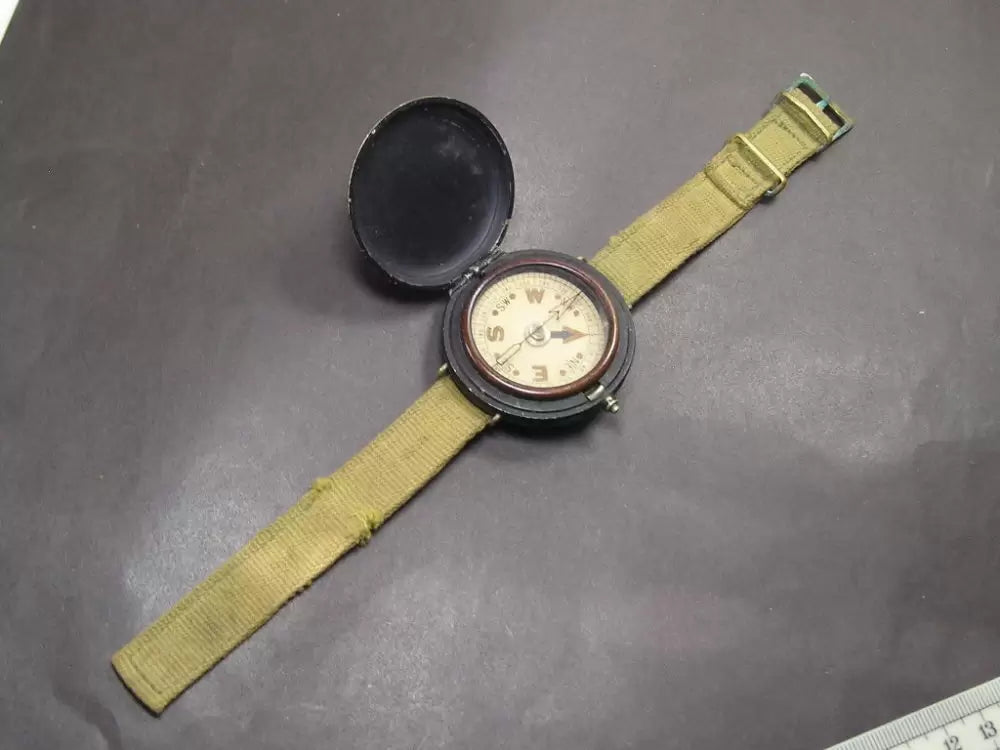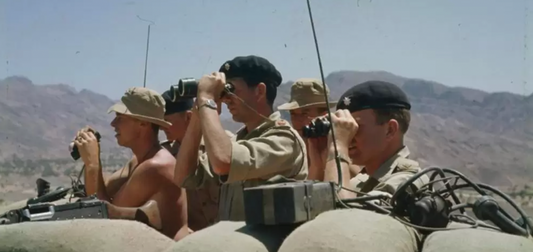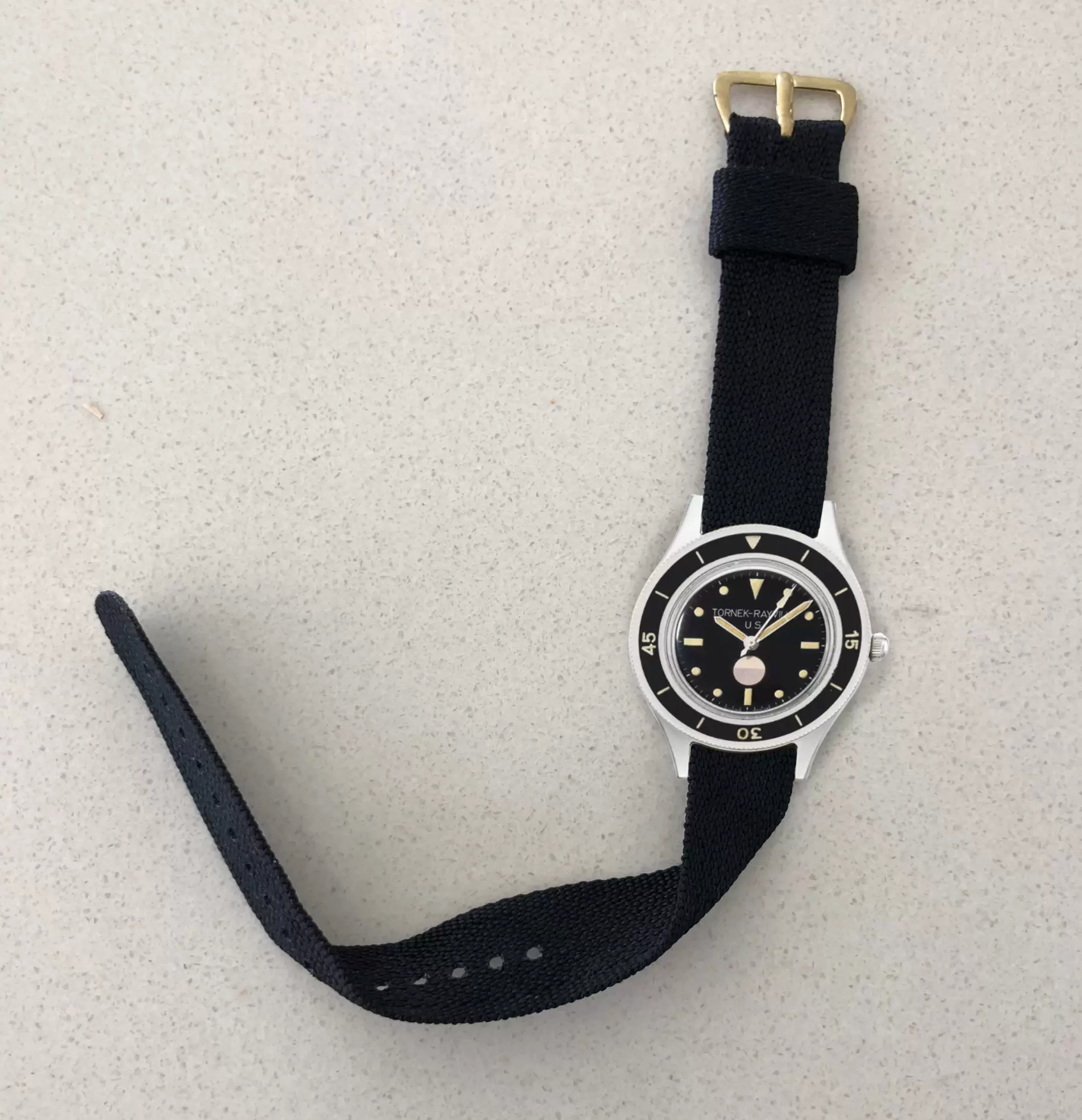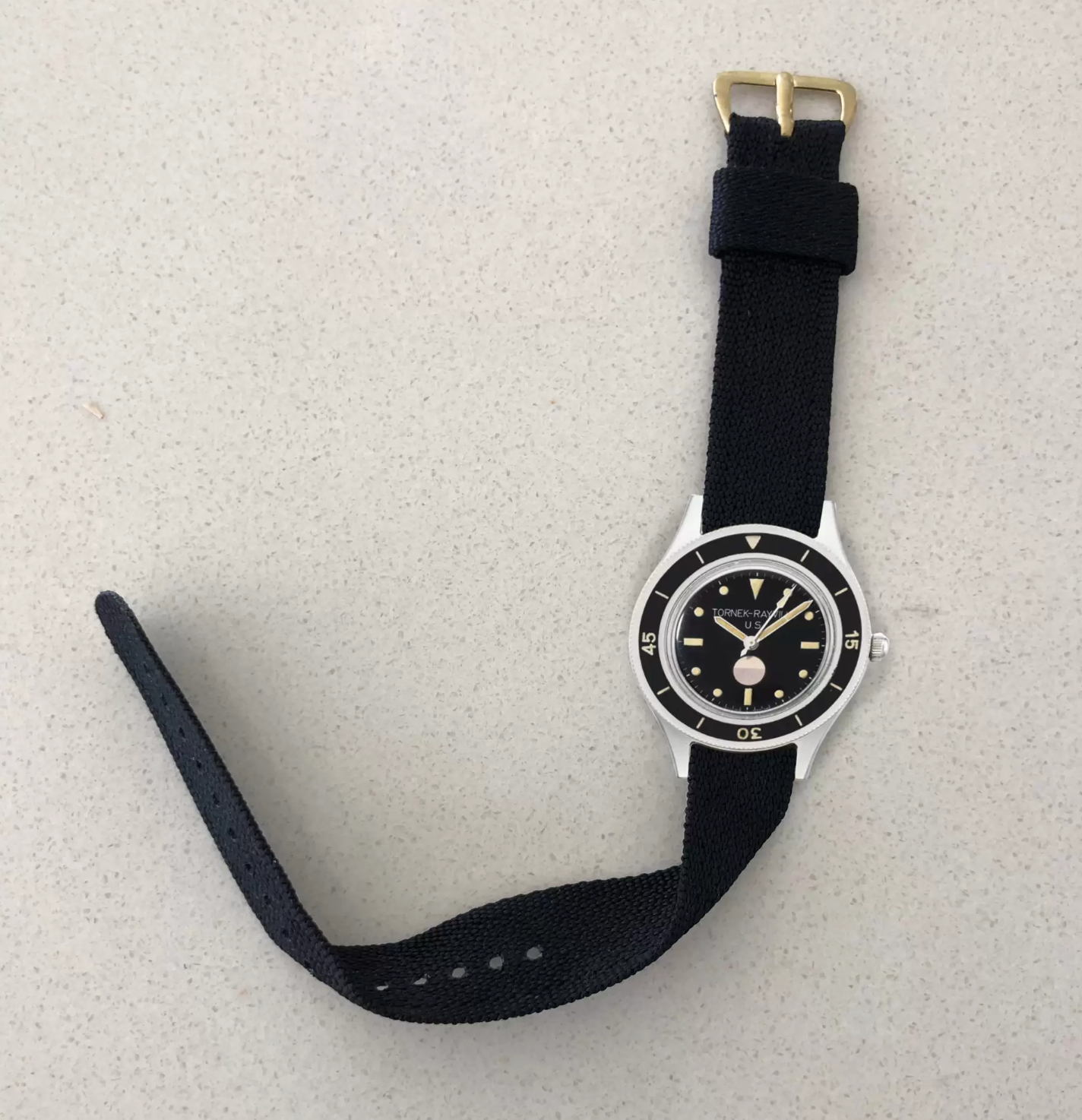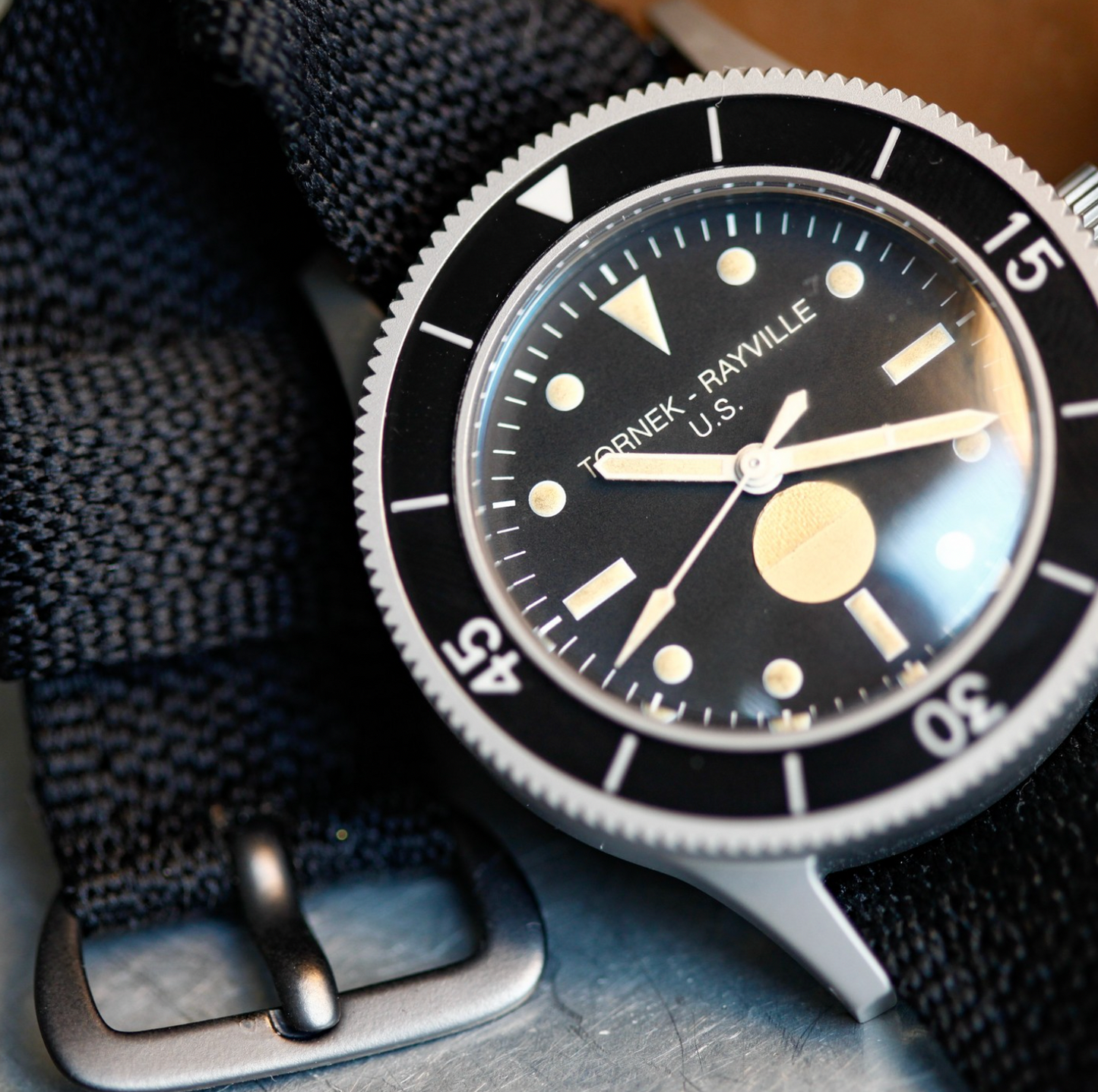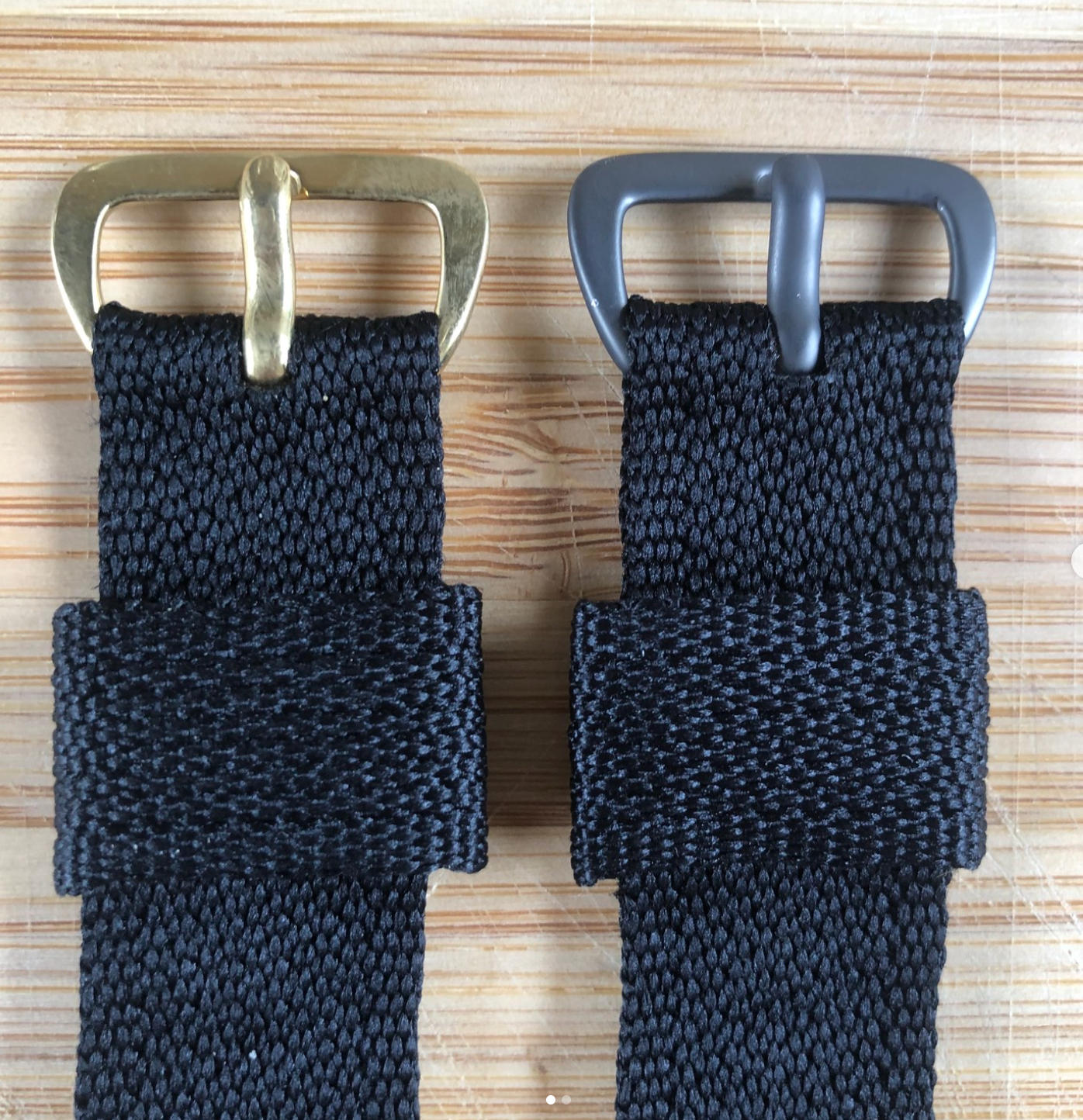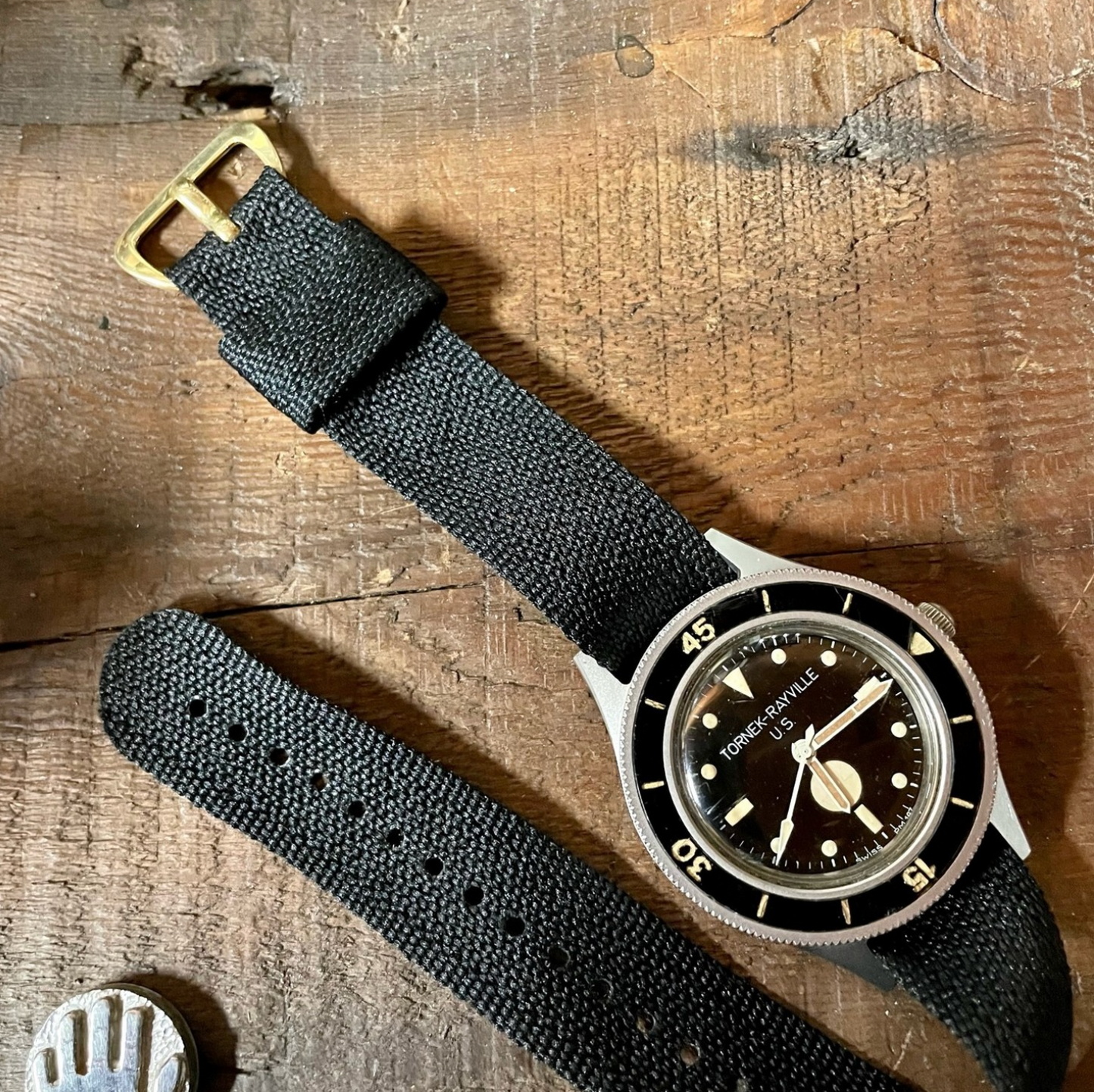The Jedburgh/SOE/SAS forces at the end of WWll, and subsequent early 1950’s campaigns, were issued with the Mark VI wrist compass, which was quite large, at 45mm diameter.
As discussed in another blog, these are commonly found on A.F.0210. straps, or the 6B/2594 G.S. strap.
http://af0210strap.com/index.php/blog/

In 1955 a smaller 35mm diameter wrist compass was issued as a replacement. It was 1mm thicker at 15mm.
The earlier Mark VI wrist compass is not listed in the Vocabulary of Royal Air Force Equipment, under Section 6B, but the 6B/2693 compass is listed as COMPASS, survival, wrist type.



Originally 6B/2615, the later MoD reference was 6B/4343707.
This, the 6B/2593 compass has been seen on the complimentary 6B/2594 G.S. watch strap, shown below on an Omega W.W.W. watch.




Image courtesy MWR forum member : geo7863
However, it is most often seen on the 6B/2615 strap, (Strap, wrist), listed above as a spare, a long fixed strap very similar to the A.F.0210. strap. The strap is cross sewn at intervals to strengthen it.


The 6B/2593 compass was usually seen worn on the wrist, but also over the sleeve, the shoulder loops, webbing, or at the ankle over the jump boots. Wrist compasses were used both by officers and enlisted men, unlike the lensatic compass, or marching compass, which was normally reserved for officers, NCO’s or men on a special mission.
Before the Korean War, specifications were issued by the US and British military for small wrist compasses.
Model 1949 Compasses were manufactured for US forces in accordance with specification MIL-C-10435(CE) Wrist, Induction, Damped, and issued to the US military in the 1950s.
Waltham Watch Co., Fee and Stemwedel Inc., and Superior Magneto Corp. supplied these compasses. A feature was a strong, long strap to allow wearing in many positions. Below is a NOS Fee and Stemwedel Inc. Model 1949 compass in an original box dated 1953.


The MoD also designed a similar wrist compass which was built during the 50’s and issued to British troops. These were designed during the Korean war and were used on the Suez Canal expedition (1956).
The initial compasses (1955) were manufactured by AGI Ltd and later compasses by F. Barker and Son. The lack of precision led the military to revert to the proven hand-held marching compass (Barker and Stanley). Moreover, its high radioactivity was another reason why it was only used for a short period. As a consequence, the compass is rare.





The above RAA/yy compasses were made by AGI Ltd. Most surviving compasses were made by F. Barker and Son, and are usually marked xxxxB/yy. The year (yy) is seen variously from 19(56) to 19(65).
Most compasses of this type have the 6B/2615 strap. The long strap allowed for wearing over clothing in cold conditions (Korea), and unusual locations (thigh and boots), but in some campaigns the strap was cut down to a shorter length for wearing on the wrist, or replaced with a 6B/2594 or A.F.0210. strap.
Later editions of the compass have a herringbone weave strap in similar style.


A 6B/2593 compass is shown below on an AF0210 strap.


Later versions of the compass were re branded as the 6B/107-8171 model.


The compass is also found on a white strap, but whether this is military issue is debatable. There is no 6B/2593 marking, nor pheon. The strap is single ply herringbone, and the buckle is wire.



